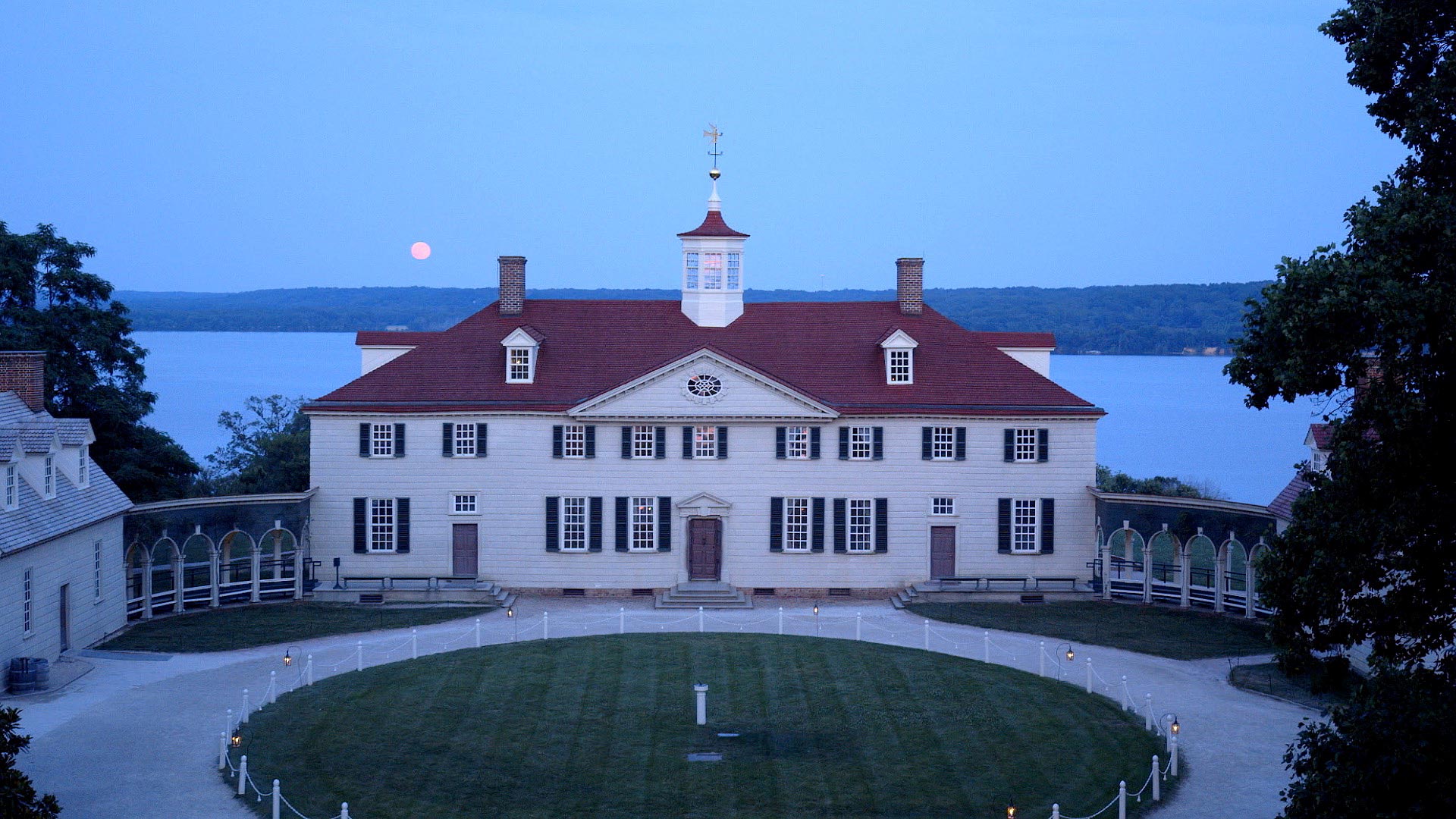I had the honor of filming recently at Mount Vernon, George Washington’s historic home and estate south of Washington, DC. The goal was to create a b-roll library for use in upcoming Virginia Tourism campaigns.
I was brought in for the project by Cameron Davidson who was shooting stills and who was creative director for both the stills and video (that’s Cameron making a couple of cameos in Mount Vernon Interrupted.) We were tasked with the overall and the epic in terms of imagery, looking for the big picture opposed to details.
We started off working in the Mount Vernon Distillery and then moved to the main compound of the estate. It ended up being a bit of heaven and earth. The house and gardens were shot primarily from a 40′ articulated lift. The distillery is built into the ground, in the cellar of a large barn about 5 miles from the main house.

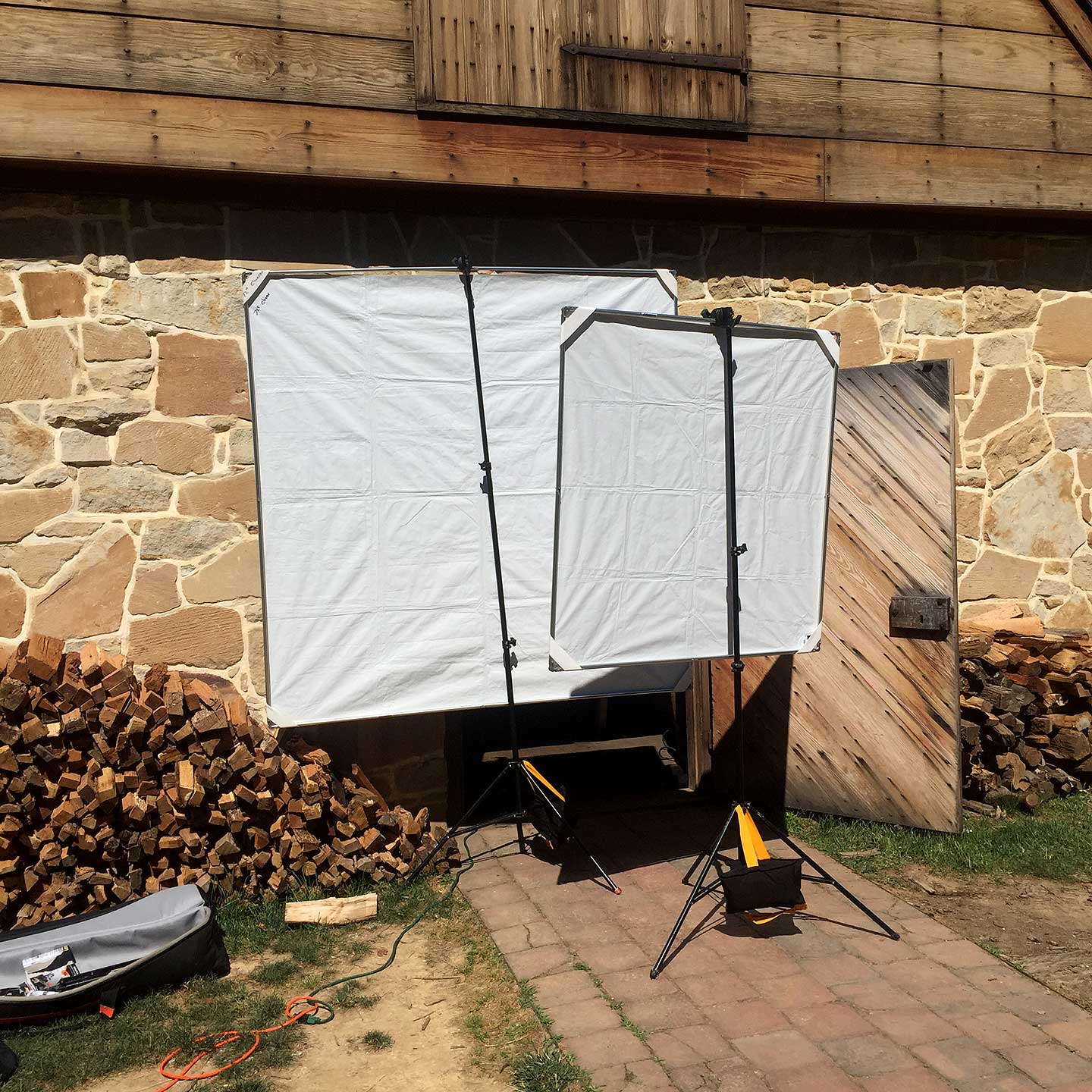
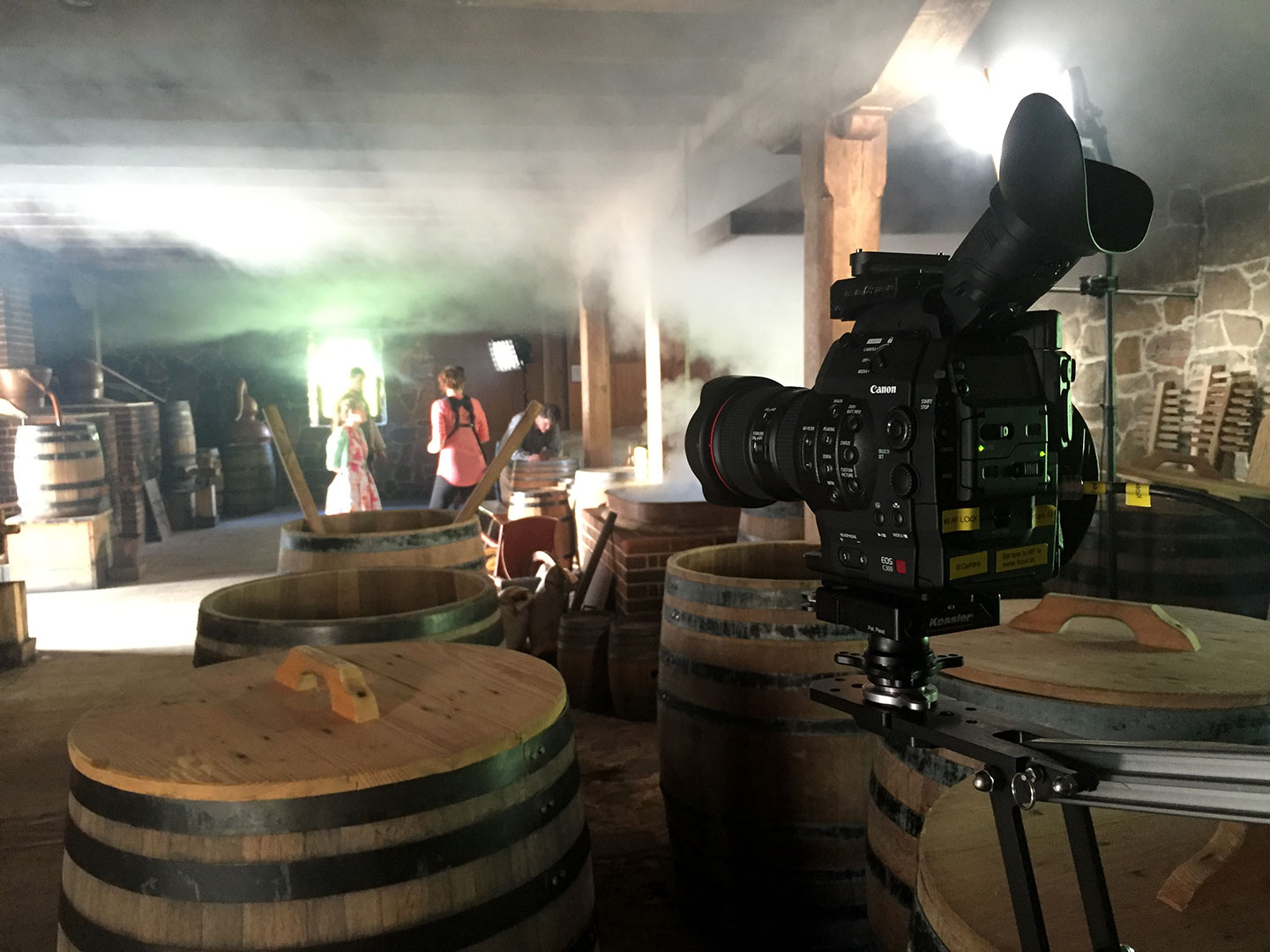

The distillery at Mount Vernon is not just a replica of what was there originally. It is a working distillery producing whiskey in much the same way that Washington’s plantation did. Distilled beverages were a fact of life in early America since the water supply could not be trusted and Washington was one of the largest distillers in the new country.
The project was originally described to me as all available light but we could not have done the shoot in the distillery without adding our own light. I had my four Litepanels Astras with me and Cameron had brought a couple of generic 1×1’s. We used all of them plus some Scrim Jims of Cameron’s to control the daylight at key points outside the barn.
I used a small jib, a Kessler Pocket Jib Traveler, for all of my filming in the distillery. This enabled me to easily add movement to the clips as well getting the camera up higher. It also made for quick camera resets. I have harped on this in many blog posts but if you can get yourself settled on a quick release platform and plates it makes it so easy and so quick to change things up on set. In my case, I have Kessler Kwik releases on just about everything and then my cameras, sliders, and my jib all have compatible plates.
In the distillery I used both my Canon C300 and with my 1DX Mark II. The latter shooting 4K 60P which would be conformed to 24p in post in order to create the slow-motion footage.
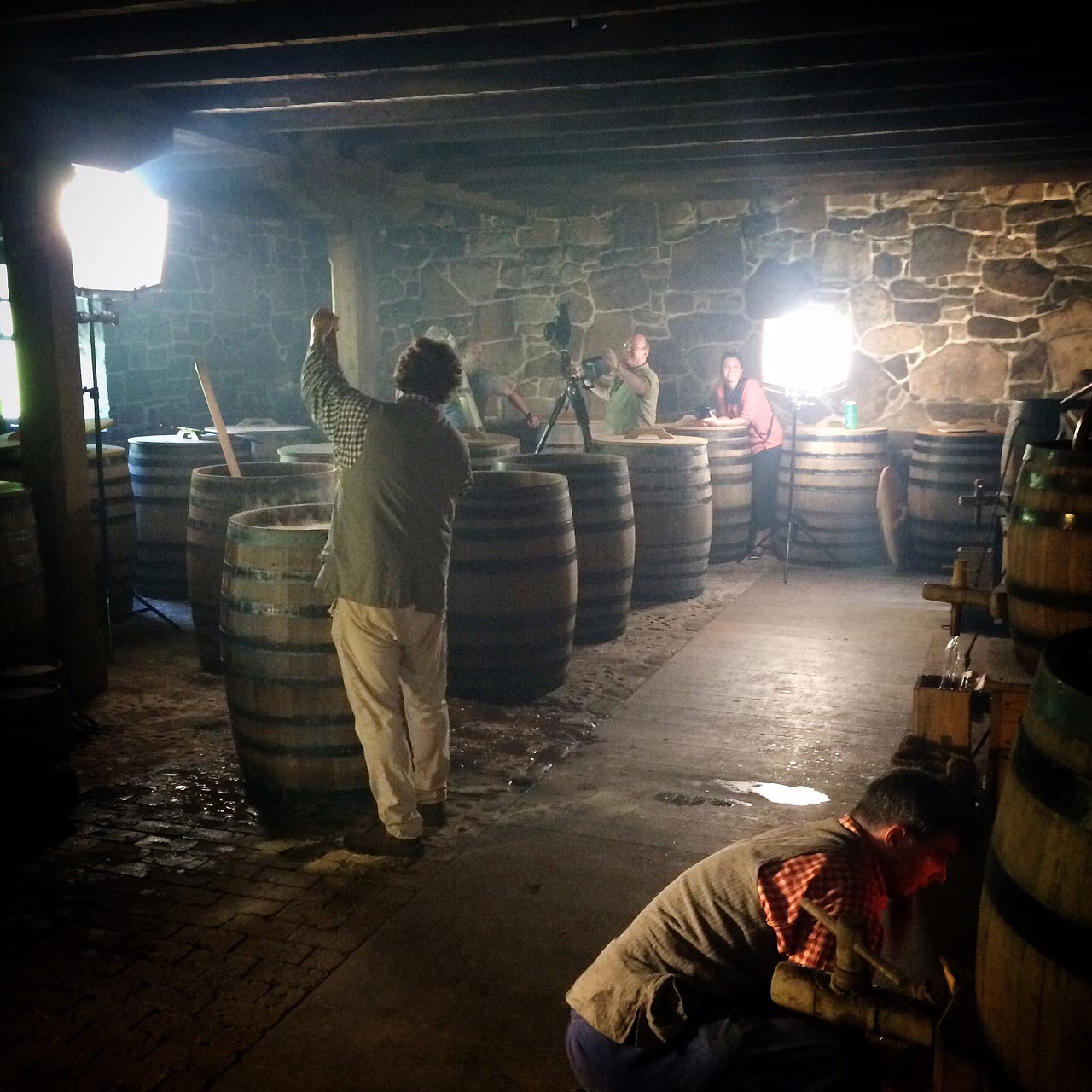
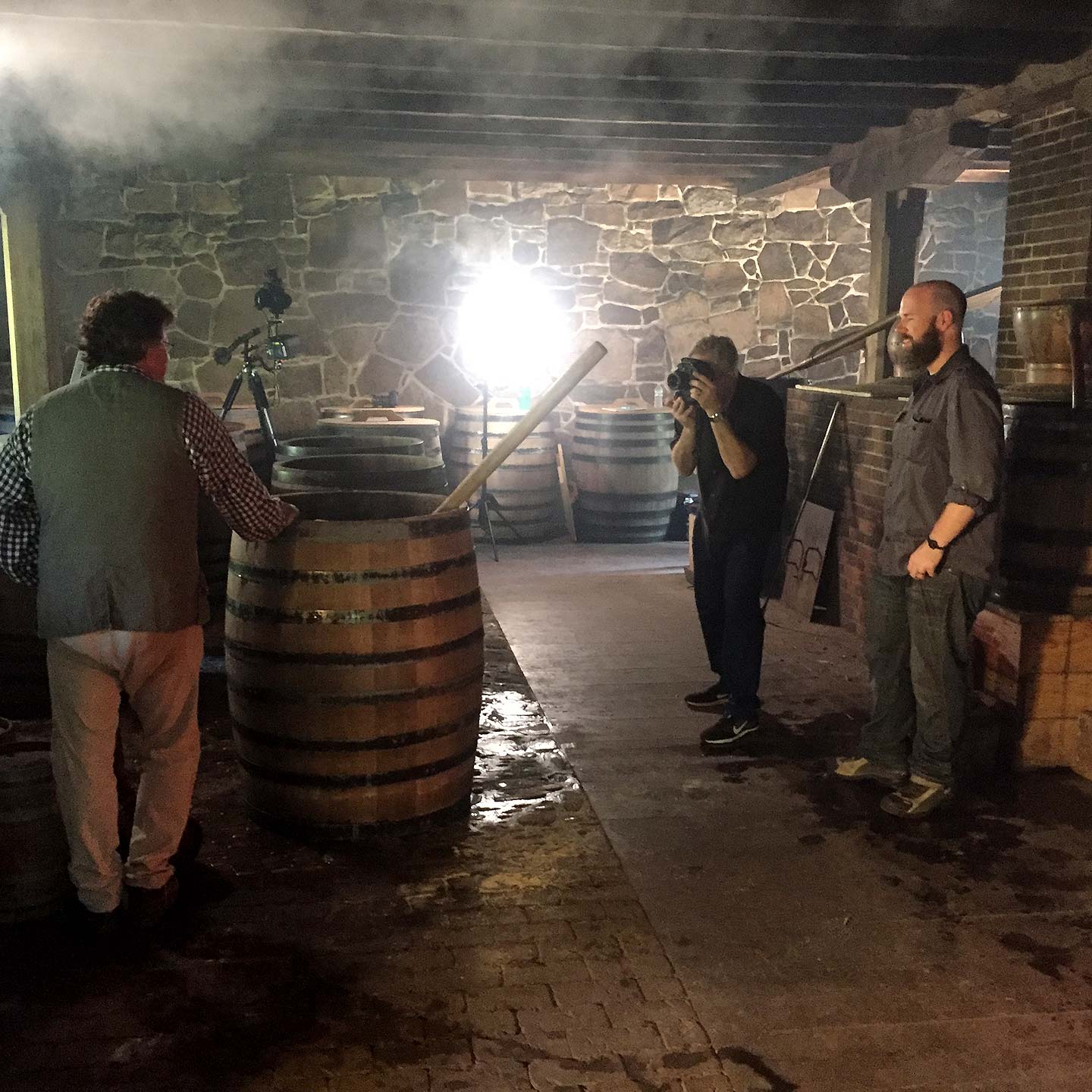
The distillery done we moved on to the main estate and the beginning of our lift-based work. Ideally, a helicopter or a drone could have done what we needed to accomplish but neither was an option due to Mount Vernon rules and the large no-fly zone for drones which encircles Washington, DC. So, the lift it was! I also supplemented the lift work with some ground based sticks/fluid head and jib work.
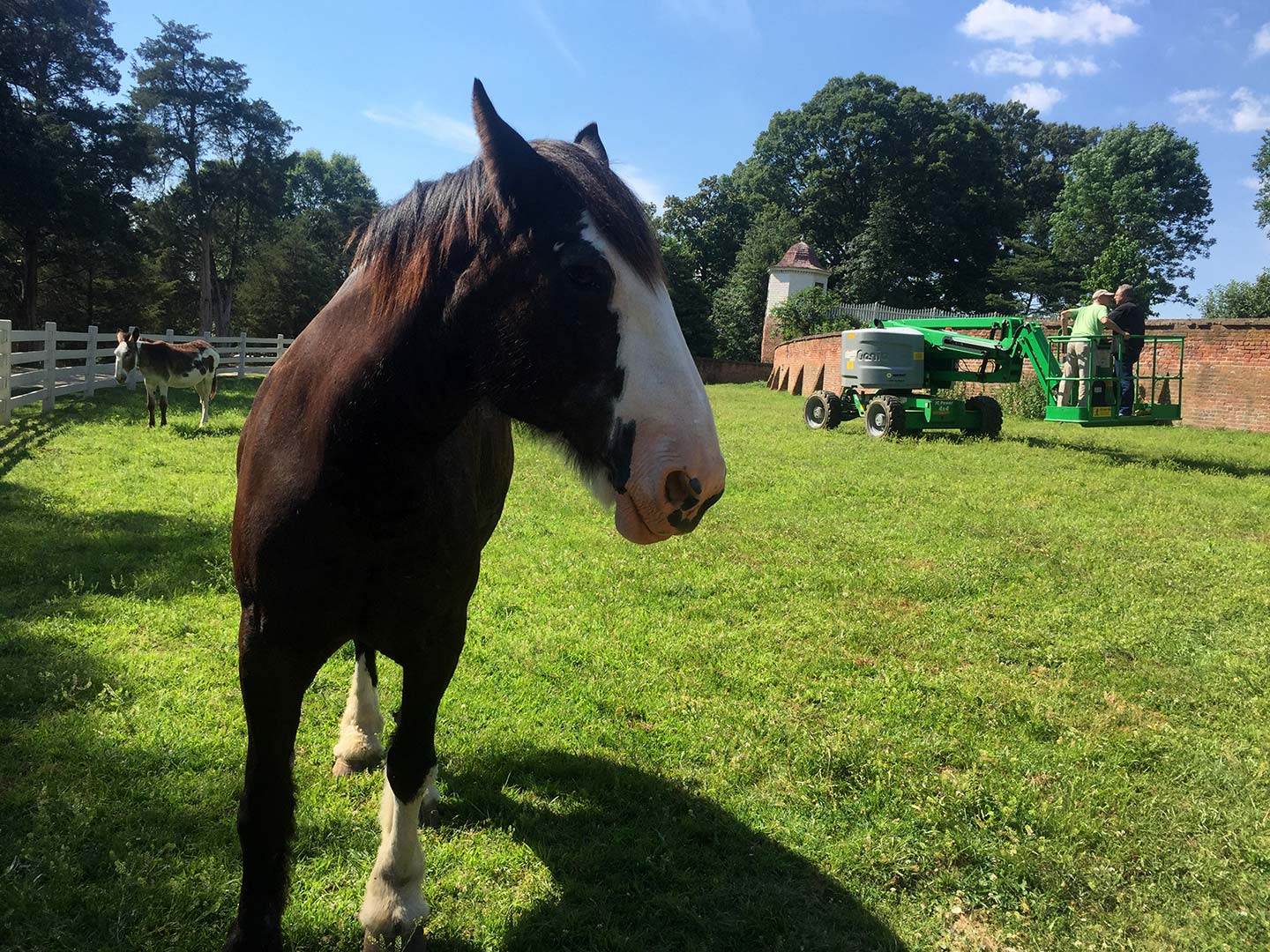
Exteriors were filmed solely on my C300. In the quickly changing light of sunset, twilight, and sunrise; the C300 with its all-in-one build and its built-in NDs is a quicker tool to work with. It is also more compact than the 1DX Mark II plus external monitor and less prone to bits and pieces loosening up. All big factors forty feet up in a lift’s basket.
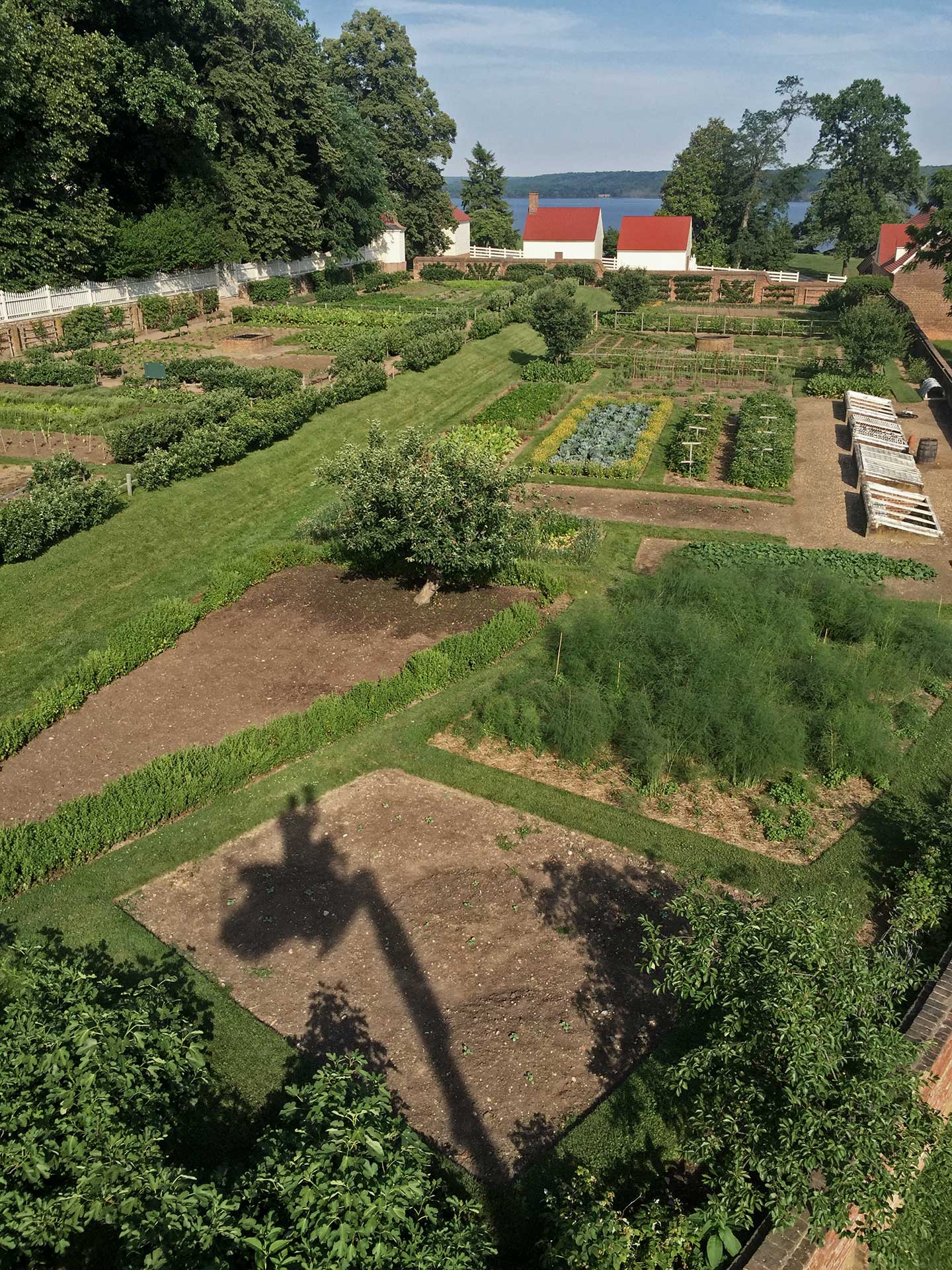
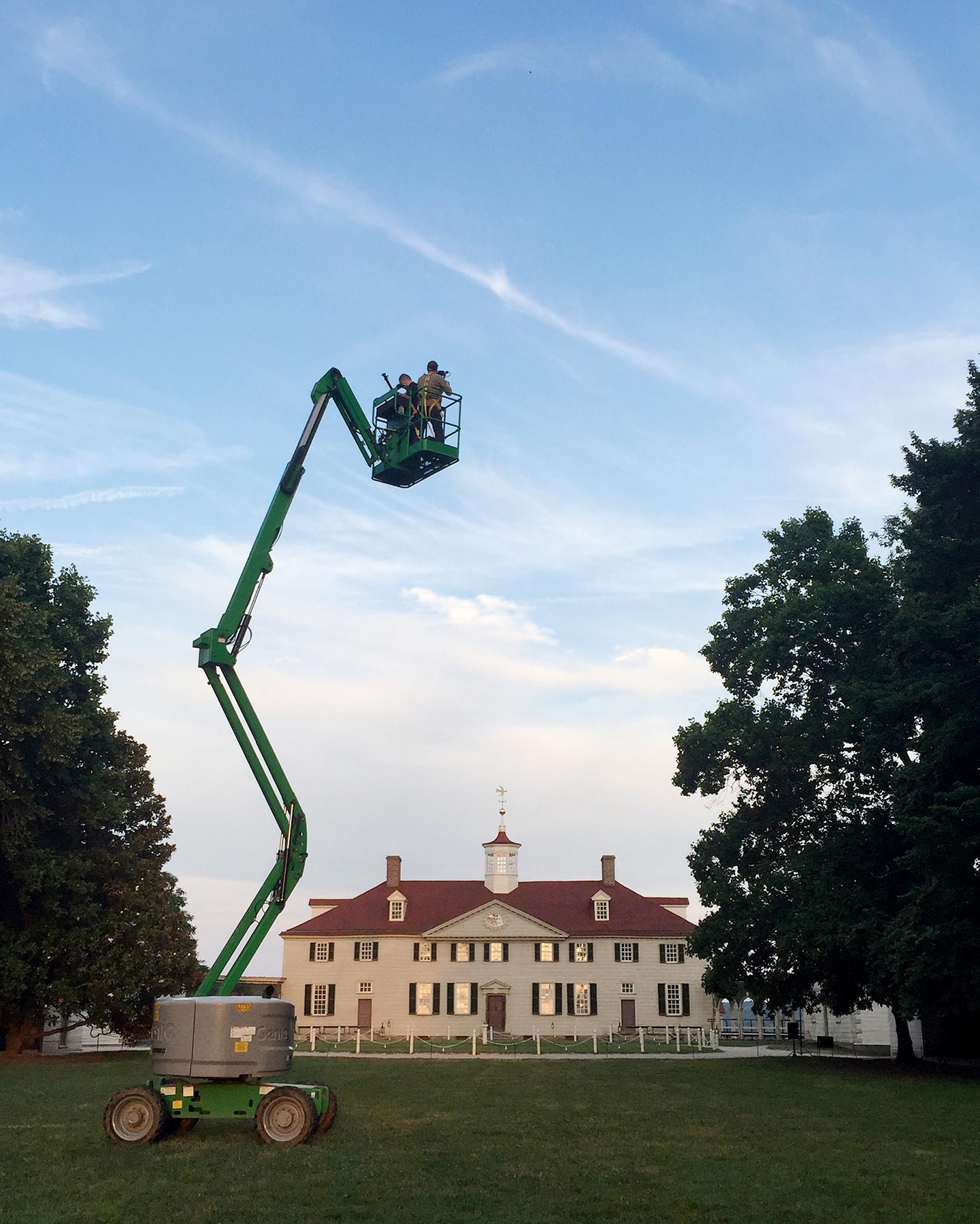
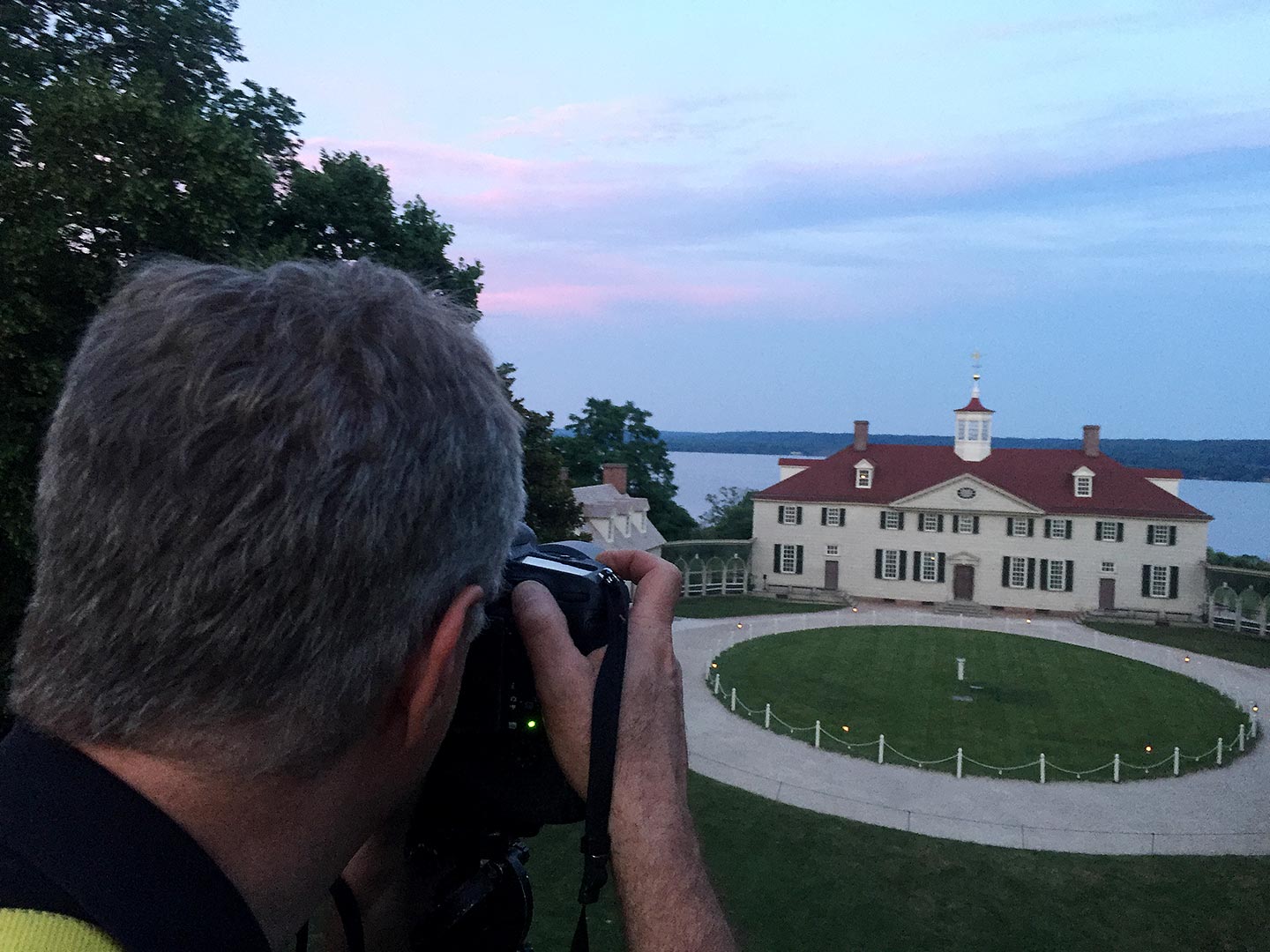
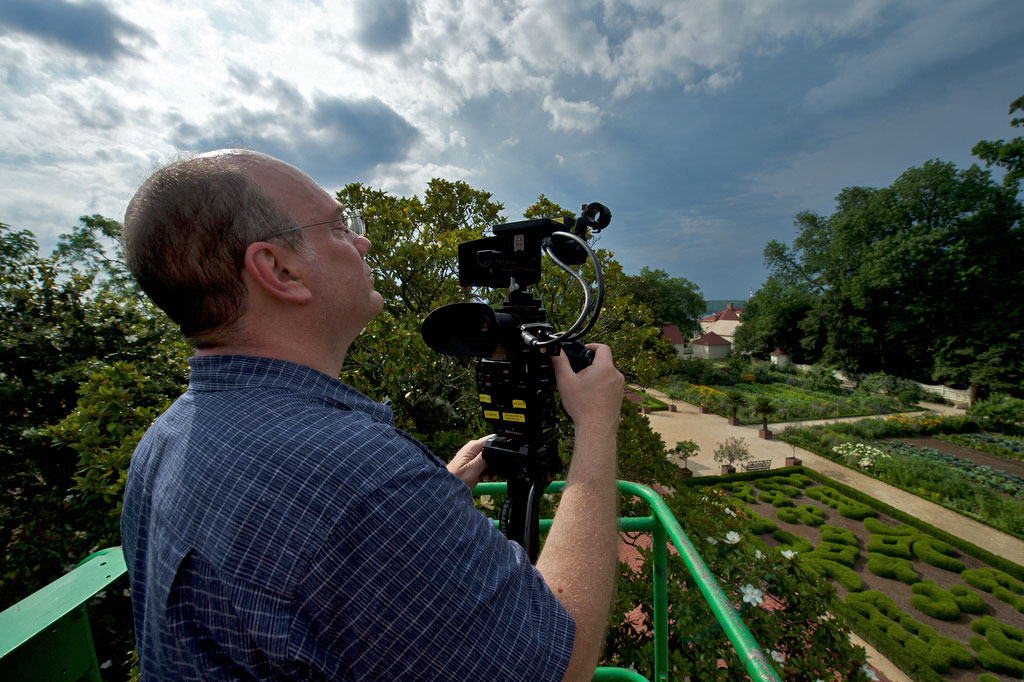
It was a thrill to work at Mount Vernon. I have fond memories of visiting as a child and I have taken my kids there as well. For this project I got to stay on the grounds of the estate which was a lot fun but I can’t claim to have gotten much sleep. Shooting through twilight on the longest day of the year and then being up for sunrise the next day means it was also the shortest night of the year! It was worth it though. Seeing the full moon rise with Ansel Adams’ Moonrise, Hernandez, NM timing – well, that’s something you never forget.
Thanks to Cameron Davidson, Sarah Hauser, Chris Flanegan, and Kristian Thacker. Thanks, too, to Virginia Tourism Corporation and Mount Vernon.
Recent New York Times article on Jack Daniels and the Mount Vernon Distillery and how slave knowledge and labor was integral to both. Steve Bashore of Mount Vernon, who is quoted in the article, is featured in my footage of the distillery.
